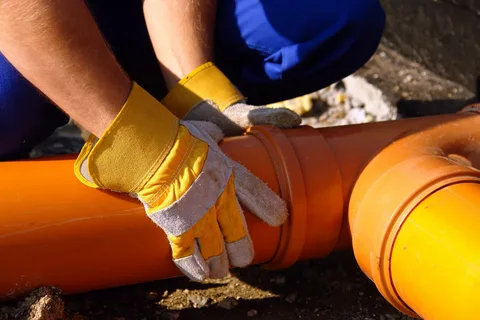Introduction
Sewer backups in homes are a growing concern, with increasing rates of occurrences attributed to aging infrastructure, combined sewer systems, tree root intrusions, and improper disposal of grease, fats, or oils. To prevent excessive sewer backups, homeowners should avoid flushing inappropriate waste items, maintain their drains and plumbing, and consider installing a backwater prevention valve. Make sure your downspouts and gutters discharge water away from your home. Regular maintenance, proper waste disposal, and being mindful of water usage during storms can help protect against the huge repair expenses and serious health risks.
Preventing Expensive Sewer Backups: A Homeowner’s Guide to Protection
Are you noticing foul odors and slow-moving drains lately in your home? Worried about the gurgling noises in your sinks and drains? You are likely experiencing a sewage backup if you drain water and it causes a backup in another drain. Preventive maintenance is the best strategy against this messy inconvenience. Improper waste disposal and grease are the major contributors to sewer backups. Homeowners should avoid overloading their systems and hire professional services to maintain their sewer systems and create a healthy home environment.
| Did you know? Sewer backups are not normally insured in your homeowners’ insurance policy. It can be purchased as a separate product through your insurance company and is relatively inexpensive. |
Here are the essential tips to safeguard your home from costly sewer backups.
1. Mindful Waste Disposal
Avoid flushing anything other than the toilet paper. Items like paper towels, wipes, feminine hygiene products, and diapers do not break down easily and can cause serious blockage. Fats and oils from cooking can harden in pipes, causing clogs when poured down from drains. Instead, allow the grease to cool down and solidify, and dispose of it in the trash. Scrape your food scraps into the trash before washing dishes, and avoid using a garbage disposal for large quantities of food waste.
2. Plumbing Maintenance and Upgrades
Schedule professional inspections regularly to timely identify the potential problems. Stay away from harsh chemical cleaners to prevent pipe corrosion. Replace old pipes with new, durable ones, and consider installing a backwater prevention valve to prevent sewer from backing up. If your sump pump discharges into your sewer system, reroute it to discharge away from the sewer line to avoid overloading the system.
| Fast fact CCTV drain surveys can locate the sewer blockages and are used for drain and sewer inspections. |
3. Proper Water Management
Climate change and increased rainfall are increasing the frequency of sewer backups in areas with aging infrastructure. Limit water usage during the storms to reduce the strain on the sewer system. Keep your gutters and downspouts clear and make sure they drain away from your home’s foundations to prevent water from seeping into the ground and potentially overloading your sewer system.
4. Tree Root Control
Tree roots can grow into the sewer lines and cause blockage. Plant trees and shrubs away from sewer lines, and if the trees are already near the sewer lines, consider installing root barriers or treatments to control root growth. Consult with a professional plumber to identify the root cause and implement appropriate solutions.
| Interesting fact The first known sewer was built around 600 BC in Rome. |
How to Handle a Sewer Backup?
In case you experience a sewer backup, consider taking the following steps.
- Turn off the electrical and water supply in the affected area.
- Contact a credible plumbing service immediately and schedule an inspection.
- Avoid contact with the hazardous water.
- Document the damage with photos and videos.
- Contact your insurance company to start the claim process.
Conclusion
Sewer backups can lead to huge expenses and serious health risks. Taking proactive steps like mindful waste disposal, proper water management, and regular plumbing maintenance and upgrades, homeowners can significantly reduce the risks of sewer backups. Knowing the signs in advance and understanding the common causes can help you stay vigilant and protect your home from costly damage.
FAQs
What are the four most common types of sewer pipes?
Cast iron pipes, clay pipes, Orangeburg pipes, and PVC and ABS pipes are the most common types of sewer pipes. PVC is widely used due to its affordability and durability.
What is the key rule for proper waste disposal?
The only paper product that is flushed is toilet paper. Place all other household waste products in the trash.
What are the consequences of poor sewage maintenance?
Failure to maintain septic tanks can lead to groundwater and surface water contamination, impacting drinking water sources and aquatic life. Violations of wastewater regulations can also result in penalties.

